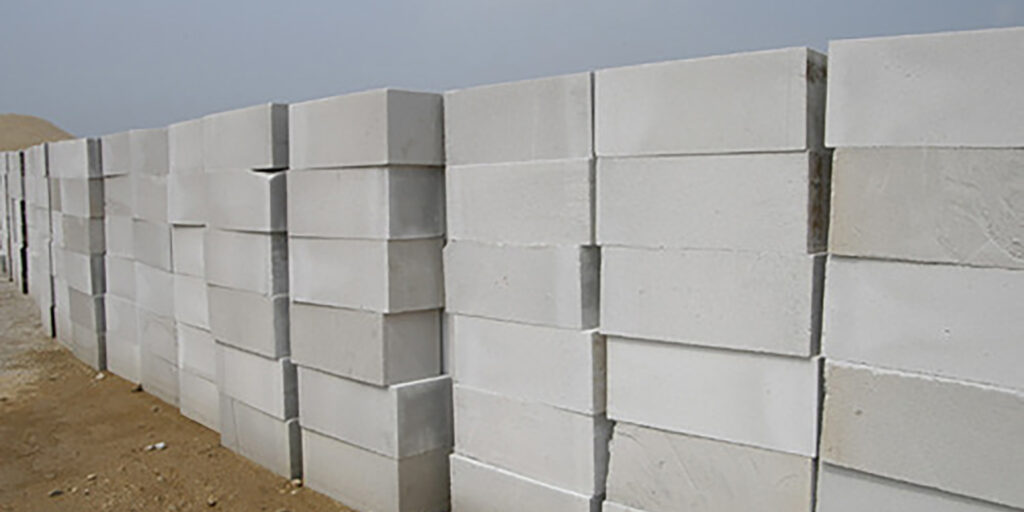In the realm of construction, innovation is key. From ancient mud bricks to modern steel and glass skyscrapers, humanity’s pursuit of stronger, safer, and more sustainable building materials has been relentless. Among these materials stands a quiet revolution: Autoclaved Aerated Concrete (AAC). Though not as widely recognized as some of its counterparts, AAC possesses remarkable properties that make it a game-changer in the construction industry.
Introduction to AAC:
Autoclaved Aerated Concrete, often abbreviated as AAC and otherwise known as aircrete, is a lightweight precast building material with remarkable thermal insulation properties. It is composed of sand, cement, lime, and aluminum powder, which undergo a chemical reaction to produce hydrogen gas within the mixture. This gas expands and creates countless tiny air pockets (like rising bread dough) throughout the material, giving AAC its characteristic lightweight and porous structure.
A Brief History:
The roots of AAC can be traced back to the early 20th century when Swedish architect Johan Axel Eriksson invented the material as an alternative to traditional concrete. However, it wasn’t until the mid-20th century that AAC gained traction as a viable construction material. Since then, its popularity has steadily grown, especially in regions where energy efficiency and sustainability are paramount concerns.
Properties of AAC:
Lightweight: AAC is significantly lighter, around one-fifth the weight of traditional concrete, making it easier to handle and transport. This characteristic not only reduces construction time but also lowers transportation costs and minimizes the load on building foundations. AAC densities range from about 460 to 750 kg/m3; for comparison, medium-density concrete blocks have a typical density range of 1350-1500 kg/m3, and dense concrete blocks range between 2300-2500 kg/m3.
Thermal Insulation: One of AAC’s most notable features is its exceptional thermal insulation properties. AAC contains about 80% air. The air pockets within the material act as insulators, effectively regulating indoor temperatures and reducing the need for additional heating or cooling systems. This makes AAC buildings more energy-efficient and environmentally friendly.
Fire Resistance: AAC is inherently fire-resistant, offering superior protection against flames and high temperatures. Its non-combustible nature makes it an ideal choice for fire-prone areas, providing occupants with valuable time to evacuate in the event of a fire.
Sound Insulation: The porous structure of AAC also lends itself to excellent sound insulation capabilities. Buildings constructed with AAC walls experience reduced noise transmission from external sources, creating quieter and more comfortable living or working environments.
Durability: Despite its lightweight composition, AAC is incredibly durable and resistant to weathering, pests, and mold. This longevity ensures that AAC structures maintain their structural integrity over time, requiring minimal maintenance and repair.
Applications of AAC:
AAC finds application in a wide range of construction projects, including residential, commercial, and industrial buildings. Some common uses of AAC include:
- Residential Homes: AAC is increasingly being used in residential construction for its energy efficiency, fire resistance, and ease of installation.
- Commercial Buildings: From office complexes to shopping malls, AAC’s versatility and durability make it a popular choice for various commercial projects.
- Industrial Facilities: AAC’s thermal insulation properties and resistance to harsh environments make it suitable for industrial applications such as warehouses and manufacturing plants.
- Institutional Buildings: Schools, hospitals, and other institutional buildings benefit from AAC’s combination of strength, safety, and sustainability.
The lightweight nature of AAC can be exploited to come up with unconventional designs, for instance, AAC has been used to build dome-shaped structures all over the world without the worries accompanied by such construction using conventional concrete.

Advantages of AAC:
Sustainability: AAC is an environmentally friendly building material that minimizes carbon emissions during production and reduces energy consumption over the building’s lifespan.
Energy Efficiency: The thermal insulation properties of AAC help reduce heating and cooling costs, leading to lower energy bills and a smaller carbon footprint.
Cost-Effectiveness: Although the initial cost of AAC may be higher than traditional materials, its long-term benefits in terms of energy savings and durability often outweigh the upfront investment.
Speed of Construction: AAC’s lightweight nature and ease of handling accelerate the construction process, resulting in shorter project timelines and lower labor costs.
Safety: AAC’s fire resistance, durability, and sound insulation qualities contribute to safer and more comfortable living and working environments for building occupants.
Versatility: AAC combines insulation and structural capability in one material.
Challenges and Considerations:
While AAC offers numerous advantages, it is essential to acknowledge some challenges and considerations associated with its use:
Initial Cost: The upfront cost of AAC may deter some builders, especially in regions where traditional materials are more affordable.
Specialized Skills: Working with AAC requires specialized knowledge and equipment, which may pose challenges for contractors unfamiliar with the material.
Moisture Sensitivity: Within the internal structure of AAC, there is no direct path for water to pass through the material; however, it can wick up moisture and an appropriate coating is required to prevent water penetration. For this reason, AAC can be susceptible to moisture damage if not properly sealed and maintained, necessitating careful attention to waterproofing measures. To be durable, AAC requires some type of applied finish, such as a polymer-modified stucco, natural or manufactured stone, or siding.
Limited Availability: In some areas, AAC may not be readily available, leading to logistical challenges and increased transportation costs. For instance, as far as I am aware there is not a single AAC plant in Kenya.
Conclusion:
Autoclaved Aerated Concrete represents a paradigm shift in construction methodology, offering a compelling combination of sustainability, energy efficiency, and durability. While it may not yet enjoy the widespread recognition of traditional building materials, AAC’s unique properties make it a compelling choice for architects, engineers, and builders seeking innovative solutions for the challenges of the 21st century. As awareness of its benefits continues to grow, AAC is poised to play an increasingly prominent role in shaping the future of construction worldwide.




